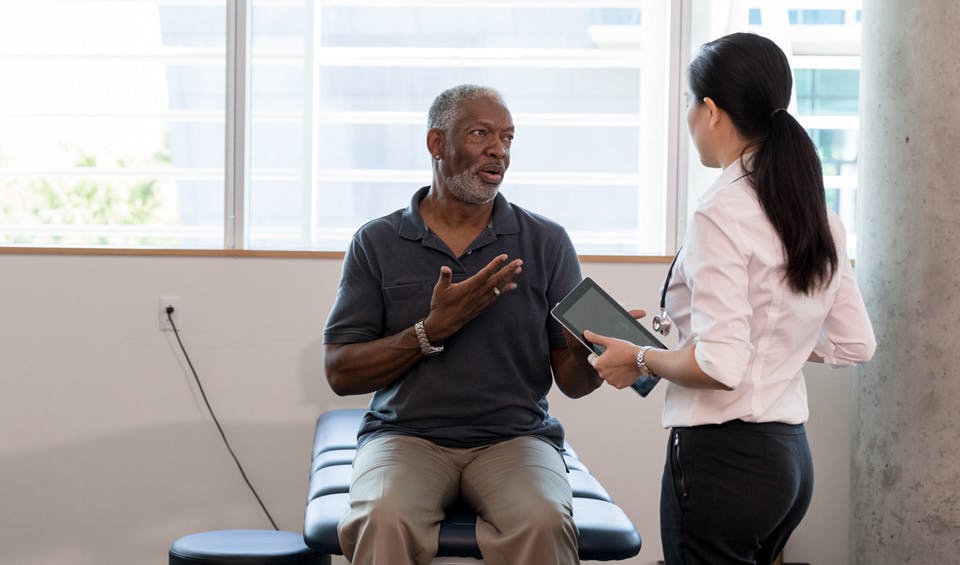Prevention and Screening
Type 2 Diabetes Risk Test
Take a screening test
The American Diabetes Association recommends that everyone should be screened every 3 years starting at age 45. If you are 35 or older with risk factors, your doctor may screen you earlier or more often.Exercise regularly
Besides making you feel generally healthy and strong, exercise can help you lose weight, gain energy, reduce blood pressure, raise high-density lipoprotein (HDL) cholesterol, and keep your blood sugar levels where they should be. Current guidelines for adults call for about 150 minutes of moderate exercise per week.Maintain a healthy weight
Staying in a healthy weight range reduces your risk for type 2 diabetes, as well as heart disease and stroke. Losing even just a small amount of weight (5-7% of your body weight or 10-14 lbs for a 200lb person) can significantly reduce your risk of developing type 2 diabetes!Eat right
Eating a balanced, healthy diet is an important part of promoting overall health and managing your diabetes. The diabetes myplate is a great starting point on how to create a healthy, balanced meal.
Prevention
Symptoms
More than 1 in 3 American adults have prediabetes. Of those with prediabetes, more than 80% don’t know they have it. Even people with type 2 diabetes may not know they have diabetes. In fact, about 1 in 5 American adults have type 2 diabetes, but don’t know it. That is why regular screenings are recommended.
It can take many years for symptom of type 2 diabetes to develop and many people may not notice symptoms at all. If you are experiencing any of the problems listed below, it doesn’t necessarily mean you have diabetes. It means it’s a good time to see your healthcare provider to discuss your symptoms and get checked for diabetes.
- Increased thirst
- Hunger after eating
- Frequent urination
- Unexplained weight loss
- Blurred vision
- Headaches
- Fatigue
- Cuts and bruises that are slow to heal
- Tingling, pain, or numbness in the hands or feet
Screening for Diabetes
A1C
An A1c blood test measures the amount of sugar present in hemoglobin. That’s the protein that distributes oxygen throughout the body. Hemoglobin that has sugar attached to it is officially called HgbA1c, which is how the test got its name.
Amount of sugar in hemoglobin
- Normal A1c Levels: below 5.7%
- Prediabetes: 5.7% - 6.4%
- Type 2 Diabetes: 6.5% or above
FPG
FPG stands for “fasting plasma glucose.” The FPG test measures the amount of glucose levels found in the blood after the person has fasted.
Amount of glucose in blood after fasting
- Normal FPG Levels: 99 mg/dL or below
- Prediabetes: 100 mg/dL - 125 mg/dL
- Type 2 Diabetes: 126 mg/dL or above
OGTT
The OGTT— or oral glucose tolerance test—is done in two steps. After giving a fasting blood sample, the patient drinks a special glucose mixture and then gives another blood sample two hours later.
Glucose tolerance
- Normal OGTT Levels 139 mg/dL or below
- Prediabetes: 140 mg/dL –199 mg/dL
- Type 2 Diabetes 200 mg/dL or above
Risk Factors & Risk Test
- Parents and/or siblings with diabetes
- BMI 25+ or 23+ for Asian Americans
- Lack of physical exercise
- High blood pressure
- A history of gestational diabetes or delivering an infant weighing more than nine pounds
- A history of polycystic ovary syndrome
Certain ethnicities
15.1%
Native Americans / Alaskan Natives12.7%
Non-Hispanic Black People12.1%
Hispanics8.0%
Asian Americans7.4%
Non-Hispanic White People

